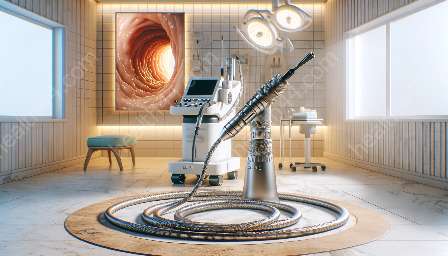Diagnostic endoscopes have revolutionized the field of medical diagnostics, offering healthcare professionals a minimally invasive way to visualize and diagnose various medical conditions.
These endoscopes are a vital part of medical devices and equipment, and their development has significantly enhanced patient care and treatment options.
The Functions of Diagnostic Endoscopes
Diagnostic endoscopes are specialized medical devices equipped with a light and camera that enable physicians to examine the interior of the body's organs or cavities. These endoscopes are commonly used to investigate and diagnose conditions related to the digestive system, respiratory system, urinary system, and female reproductive system.
Endoscopic procedures offer numerous advantages, including the ability to detect abnormalities, take tissue samples for biopsy, and even perform certain therapeutic interventions without the need for traditional open surgery.
Types of Diagnostic Endoscopes
There are various types of diagnostic endoscopes designed to access different parts of the body. Gastrointestinal endoscopes, for example, are used to examine the esophagus, stomach, and intestines, while bronchoscopes are used to visualize the airways and lungs. Similarly, cystoscopes allow examination of the bladder and urethra, and hysteroscopes are used to inspect the uterus.
Each type of endoscope is equipped with specialized features tailored to the specific anatomical region it is designed to examine. The ongoing advancements in endoscopic technology have led to the development of more specialized and versatile endoscopes that offer enhanced imaging capabilities and improved maneuverability.
Impact on Patient Care
Diagnostic endoscopes have significantly impacted patient care by enabling earlier and more accurate diagnoses, thus leading to better treatment outcomes. The minimally invasive nature of these procedures also results in reduced patient discomfort, shorter recovery times, and lower healthcare costs.
Furthermore, the use of diagnostic endoscopes has facilitated the shift towards preventive medicine by allowing for routine screenings and surveillance of high-risk patients, ultimately contributing to improved patient outcomes and reduced disease burden.
Integration with Medical Devices and Equipment
The seamless integration of diagnostic endoscopes with other medical devices and equipment has further enhanced their utility and effectiveness. This integration allows for advanced imaging modalities, such as high-definition and 3D imaging, as well as the incorporation of additional tools for therapeutic interventions.
Moreover, the compatibility of diagnostic endoscopes with robotic systems and minimally invasive surgical instruments has expanded the scope of endoscopic procedures, enabling complex interventions with greater precision and safety.
Technological Advancements and Future Trends
The field of diagnostic endoscopy continues to witness rapid technological advancements, including miniaturization of endoscopic components, improved image resolution, and the integration of artificial intelligence for real-time image analysis and diagnostic support.
Additionally, ongoing research and development efforts are focusing on expanding the capabilities of endoscopes for early cancer detection, targeted drug delivery, and personalized medicine applications.
Conclusion
Diagnostic endoscopes play a crucial role in modern medicine, offering healthcare professionals a powerful tool for accurate diagnostics and minimally invasive interventions. As the field of endoscopy continues to evolve, the integration of diagnostic endoscopes with medical devices and equipment will further enhance their impact on patient care, ushering in a new era of precision medicine and improved clinical outcomes.


